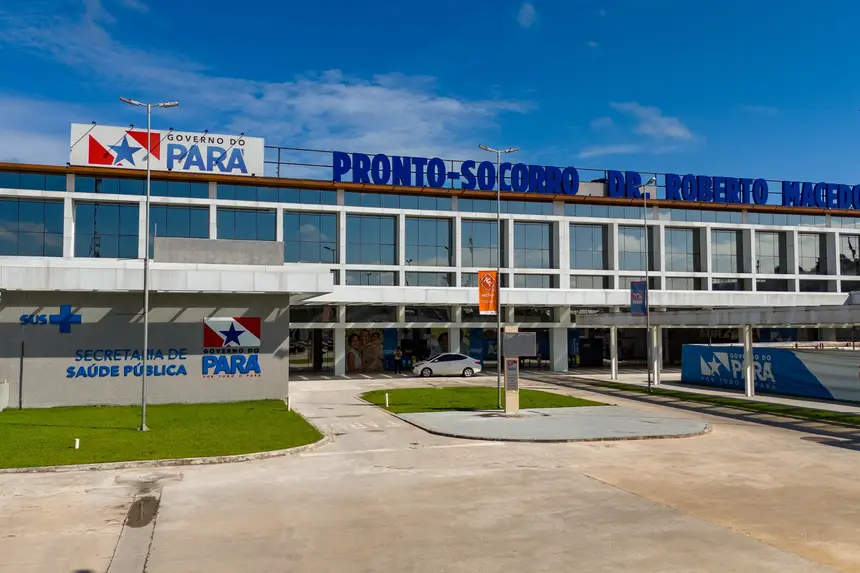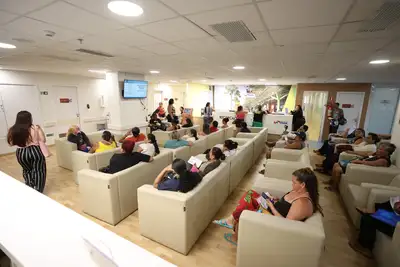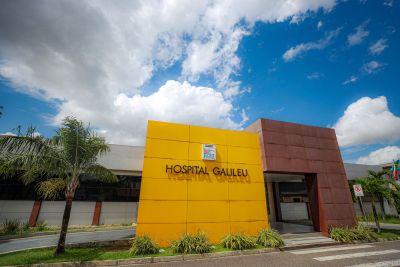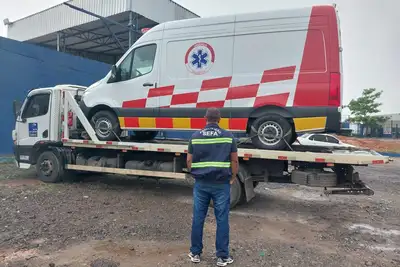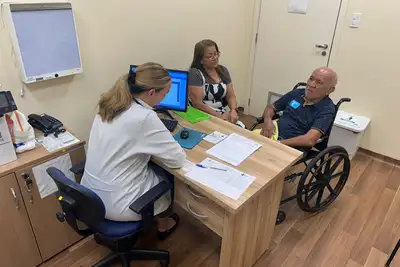Dr. Roberto Macedo Emergency Room is a reference in kinesiological ultrasound in Pará
The equipment assists in identifying injuries and choosing the most appropriate treatment, as well as in the process of weaning from mechanical ventilation
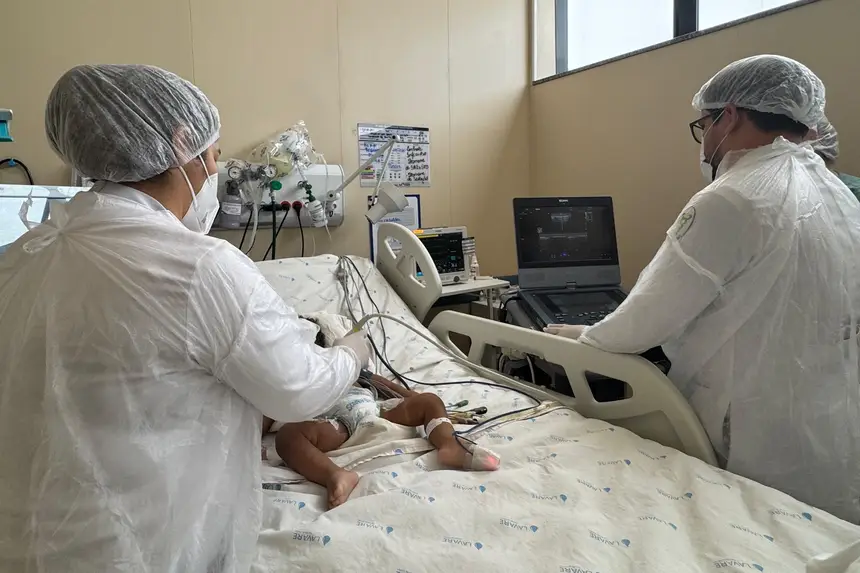
As a state reference for emergency care in Belém and the metropolitan region, the Dr. Roberto Macedo Emergency Room (PSRM) in Belém innovates by offering kinesiological ultrasound, an imaging exam available only at this health unit, among public network hospitals, for patients in intensive care using respiratory devices.
The tool, which allows the analysis of the movement and function of musculoskeletal structures such as muscles, tendons, joints, and fascia during movement, is used in Physical Therapy to assess the morphology and functionality of these structures, assisting in identifying injuries and choosing the most appropriate treatment, as well as in the process of weaning from mechanical ventilation, providing elements for pleuropulmonary and diaphragmatic assessment.
According to Paulo Sassim, the intensive care physiotherapist on the rehabilitation team in the Adult ICU, "real-time bedside assessment, without the need to move the patient or the team to other sectors, speeds up the evaluation and allows for frequent reassessments, which are also relevant benefits that kinesiological ultrasound offers."
Sassim also points out that the imaging exam, in addition to allowing for early and targeted intervention, is also a safe option, as it does not use radiation and is suitable for patients of all ages and conditions.
“The technique, which qualifies health care for the population of Belém and the metropolitan region, available at PSRM, assists in the weaning process from mechanical ventilation, providing elements for pleuropulmonary and diaphragmatic assessment. This way, the team can make treatment decisions and monitor the patient's evolution effectively,” he emphasizes.
Nicollas Levi Benício de Sousa, 11 months old, was referred from São Miguel do Guamá, a municipality in northeastern Pará, for treatment of pneumonia and bronchiolitis in the Pediatric ICU at PSRM, where he is using mechanical ventilation. On Wednesday afternoon (20), the patient was evaluated by physiotherapists Walbert Pompeo and Ana Carolina Mússio. Pompeo highlighted the importance of the new technology for monitoring diaphragmatic muscle, an important factor to be assessed during the weaning phase from respiratory devices.
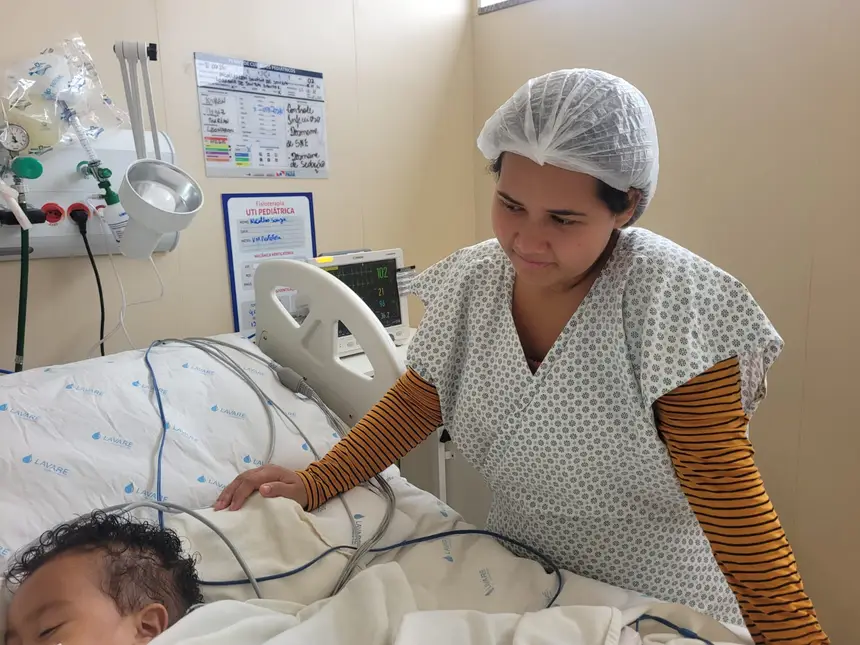
“I was able to observe a good performance of Nicollas's diaphragmatic muscle, and this is a very positive factor for the patient because it will facilitate his weaning from ventilation, allowing him to exit this ventilatory context early. With the kinesiological ultrasound device, we can perform this daily assessment, which is an important advancement for patients who need this monitoring.
Lorrana de Sousa Santos, Nicollas's mother, expressed her satisfaction in being able to follow her son's positive evolution. “I was very happy to know that in addition to monitoring the improvement of patients regarding their breathing, to see if they can already be without the devices, this technology showed that my son is improving day by day, and that this improvement can be monitored by this exam, which, thank God, showed that he will soon be free from these devices, breathing normally,” she emphasized.
Tatyane Leal, an intensive care physiotherapist in the Pediatric ICU, who, like Sassim, performs kinesiological ultrasounds, highlights the importance of kinesiological ultrasound in the sector, given the high demand served at PSRM.
“In pediatrics, the exam is especially useful, as children have greater sensitivity to more invasive exams. Among the benefits are: monitoring the strength and mobility of the diaphragm, detecting early signs of muscle fatigue, adjusting mechanical ventilation parameters more safely and individually, and assisting in the ideal moment for weaning from ventilation,” she lists.
According to the physiotherapist, in the Pediatric ICU, the assessment of respiratory muscle with ultrasound means greater safety in treatment. “With this resource, it is possible to predict risks of extubation failure, reduce the time of mechanical ventilation, decrease complications related to prolonged ventilator use, and individualize the care of each child. This directly reflects in better outcomes, such as faster recovery and higher quality of life after discharge,” she reinforces.
Cases evaluated with kinesiological ultrasound
Among the demands of patients assisted in both the Pediatric ICU and the Adult ICU, evaluated with the imaging exam, are those in critical situations, on prolonged mechanical ventilation, with severe respiratory diseases, bronchiolitis, asthma, pneumonia, Acute Respiratory Distress Syndrome (ARDS), or in situations where there is suspicion of respiratory muscle weakness or fatigue. “The exam is also indicated for children with neuromuscular diseases and for patients who have had failures in previous extubation attempts,” adds Tatyane Leal.
Teams in training for the use of the method
With training and qualification of the entire physiotherapy team, in addition to the development of assessment protocols, activities that are taking place during this month of August, it is expected that in September, kinesiological ultrasounds will be performed daily, as needed, including for patients in the inpatient units (Adult and Pediatric).
“The new method, which is being used at PRSM by the physiotherapy team, is a milestone for the respiratory care of pediatric and adult patients. The technique contributes to safer clinical decisions, based on evidence, which is extremely important for the population, as it will provide patients with a faster and safer assessment, allowing professionals to make informed decisions and perform technical procedures with greater precision. This will contribute to improving the quality of care and reducing risks, directly benefiting the patients assisted in our Emergency Room,” assures the general director of PSRM, Carlos Vinícius Ribeiro Quadros.


